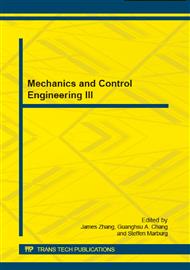p.3
p.7
p.12
p.17
p.22
p.27
p.32
p.39
Experimental Study on Advanced Reburning for NOx Reduction by Pulsating Injection of Reburn Fuel
Abstract:
Reburning technology has been developed to adopt various commercial combustion systems. Fuel lean reburning is an advanced reburning method to reduce NOx economically without using burnout air, however it is not easy to get high NOx reduction efficiency. In the fuel lean reburning system, the localized fuel rich eddies are used to establish partial fuel rich regions so that the NOx can react with hydrocarbon radical restrictively. In this paper, a new advanced reburning method which supplies reburn fuel with oscillatory motion is introduced to increase NOx reduction rate effectively. To clarify whether forced oscillating injection of reburn fuel can effectively reduce NOx emission, experimental tests were conducted in vertical combustion furnace. Experiments were performed in flames stabilized by a gas burner. The natural gas is used as both main and reburn fuel and total thermal input is about 40kW. The forced oscillating injection of reburn fuel is realized by electronic solenoid valve, so that fuel rich region and fuel lean region is established alternately. In the fuel rich region, NOx is converted to N2 by reburning reaction, however unburned hydrocarbon and CO is oxidized in fuel lean zone and mixing zone at downstream where slightly fuel lean region is formed by mixing of two regions. The NOx reduction rate increases up to 41% by forced oscillating reburn motion. And this paper makes clear that in order to decrease NOx when oscillating reburn fuel injection system is adopted, the control of factors such as frequency and duty ratio is very important.
Info:
Periodical:
Pages:
7-11
Citation:
Online since:
December 2014
Authors:
Price:
Сopyright:
© 2015 Trans Tech Publications Ltd. All Rights Reserved
Share:
Citation:


